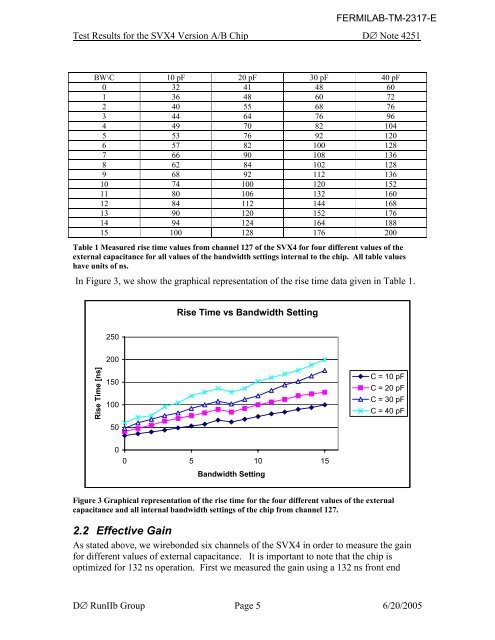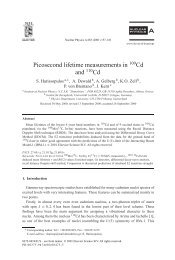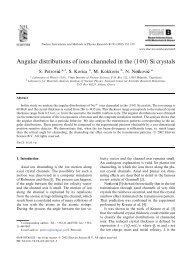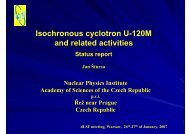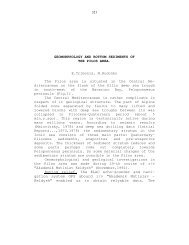SVX4 User's Manual
SVX4 User's Manual
SVX4 User's Manual
Create successful ePaper yourself
Turn your PDF publications into a flip-book with our unique Google optimized e-Paper software.
FERMILAB-TM-2317-E<br />
Test Results for the <strong>SVX4</strong> Version A/B Chip D∅ Note 4251<br />
BW\C 10 pF 20 pF 30 pF 40 pF<br />
0 32 41 48 60<br />
1 36 48 60 72<br />
2 40 55 68 76<br />
3 44 64 76 96<br />
4 49 70 82 104<br />
5 53 76 92 120<br />
6 57 82 100 128<br />
7 66 90 108 136<br />
8 62 84 102 128<br />
9 68 92 112 136<br />
10 74 100 120 152<br />
11 80 106 132 160<br />
12 84 112 144 168<br />
13 90 120 152 176<br />
14 94 124 164 188<br />
15 100 128 176 200<br />
Table 1 Measured rise time values from channel 127 of the <strong>SVX4</strong> for four different values of the<br />
external capacitance for all values of the bandwidth settings internal to the chip. All table values<br />
have units of ns.<br />
In Figure 3, we show the graphical representation of the rise time data given in Table 1.<br />
Rise Time vs Bandwidth Setting<br />
250<br />
200<br />
Rise Time [ns]<br />
150<br />
100<br />
50<br />
C = 10 pF<br />
C = 20 pF<br />
C = 30 pF<br />
C = 40 pF<br />
0<br />
0 5 10 15<br />
Bandwidth Setting<br />
Figure 3 Graphical representation of the rise time for the four different values of the external<br />
capacitance and all internal bandwidth settings of the chip from channel 127.<br />
2.2 Effective Gain<br />
As stated above, we wirebonded six channels of the <strong>SVX4</strong> in order to measure the gain<br />
for different values of external capacitance. It is important to note that the chip is<br />
optimized for 132 ns operation. First we measured the gain using a 132 ns front end<br />
D∅ RunIIb Group Page 5 6/20/2005


